Botanical Illustration: Why it’s still relevant
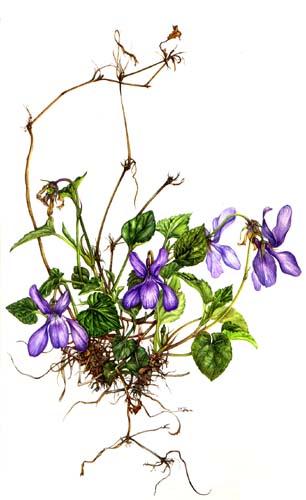
Why use botanical illustration?
I recently read a good blog by Susannah Spier. She argues that botanical illustration still matters. I agree strongly with it. It’s the basis of this week’s blog.
It’s a relevant question. There are so many good ways of recording botanical subjects with digital devices. Why should the traditional skills of botanical illustration still be needed?
The answer is multi-faceted. I’m not someone who thinks there’s no place for photography in botany. Some think illustration and photography can’t complement one another. I believe they can, and do. Illustrations aren’t more valuable or useful than photos. Yet in today’s modern world, traditional botanical illustration is still required.
What are the advantages of botanical illustration when compared to photography?
Illustrators will often isolate parts of a plant which are interesting or diagnostic. Details are drawn up, and accompany a central image. The shape of a seedpod, adventitious roots, or a leaf margins can be included. With dexterity, a botanical illustrator can highlight these features. Including cross-sections of fruit, or sections of flowers is also a common practice. It clarifies matters for anyone trying to identify a plant.
I don’t suggest photographers fail to do this. I just question if a photo of a cross-section of a flower can ever be as clear as a black and white line illustration.
Botanical details in illustrations
If you wish to describe a plant fully, you can’t simply record its flowers, or its seeds. A full description requires information on leaves, flowering structures, buds, fruits, and seeds. Photographers can combine these elements into one image by stitching together photos taken at different times of year. I believe there’s a grace found in botanical illustrations which unites these elements on one sheet. (Perhaps as in my sketchbook study of a rose).
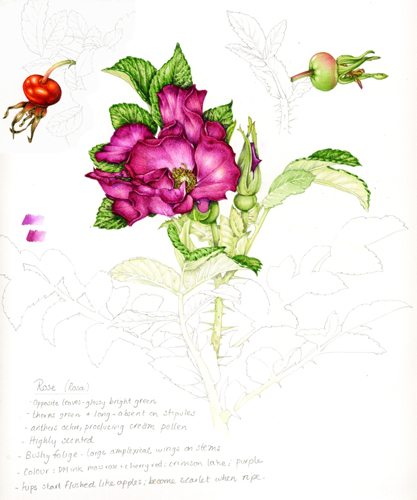
Emphasis in botanical illustration
Botanical illustrators are good at emphasizing features which matter. This helps when a plant has numerous varieties or pheonotypes in one species. The illustration below is by Johannes Simon Holtzbecher (c. 1649). He shows variety in the leaves and flowers of Cyclamen hedrifolium. I have no doubt a photographer could artfully stitch together photos of different plants. But I do wonder if it would be equally successful in emphasizing the difference between the leaf pattern and shape?
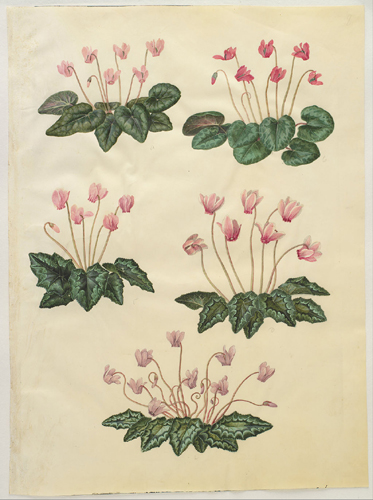
Illustrators can isolate plants
Plants are distinctive once you know them. They grow in specific and diagnostic shapes. Perhaps the flowers always droop, or the branches are held at a certain angle. It can be hard to untangle a plant in the wild from what surrounds it. Many botanical photos of plants show the specimen removed from the background. It means the plant is also removed from its growing “habit” or characteristic shape.
A photographer may try to show the plant growing in situ. This would show the growth habit. It can be confusing. The viewer has to untangle the plant from its surroundings. A botanical illustrator has the ability to edit any background. Illustrations can show a plant growing in the wild. They can also record the plants’ habit. A few blades of grass might be included, or some leaf litter. These details may provide context. They will certainly not confuse the viewer, nor detract from the overall plant shape..
Compare the two images of the same plant below. The first is a photo of an early violet plant, from Wikipedia.
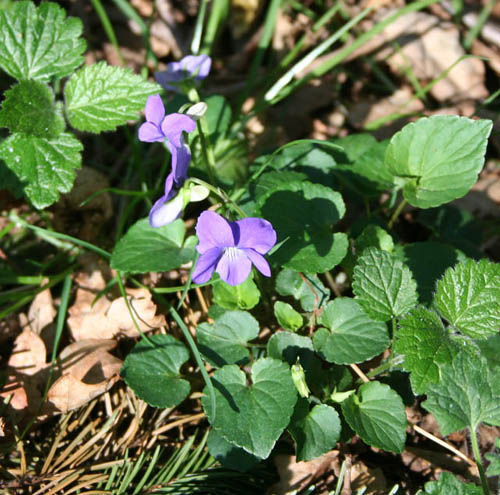
The second is of the entire early violet plant (the same plant). Instead of a background, I just included a few bits of leaf litter.
Perhaps I’m biased. I do think the second gives a clearer idea of the plant habit, and the leaves. In the photo, the downy leaves could easily be mistaken for part of the violet plant.
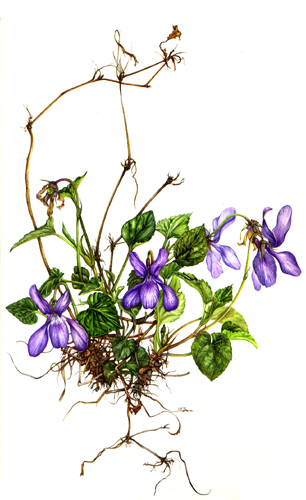
Clarity in botanical illustration
The last point is that a botanical illustration can be clearer than a photo. This relates to habit and structure. Compare these images of meadowsweet. One is a photo from Wikipedia, one a pencil illustration:
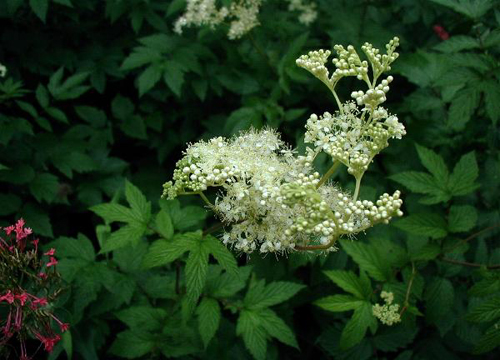
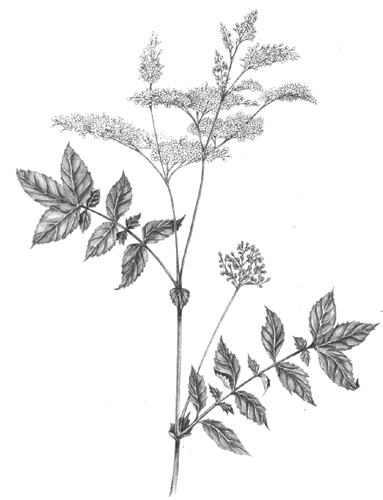
In the illustration, all the details of the plant have been drawn. The structure of every part of the specimen needs to be understood. The veins of the leaf need to be correctly illustrated.
This involves looking at the plant for ages. This leads to a clearer understanding of the subject than if you just pointed a camera at it.
Botanical illustration as a universal language
Finally, it’s worth repeating a point made by Erin Tripp, Assistant Professor of Ecology and Evolutionary Biology at the University of Colorado in Boulder. She says, “lots of people don’t speak the language of botany, but everyone speaks the language of illustration”.
A verbal description of a plant may not interest a non-botanist. I reckon a beautifully executed botanical illustration would. It is surely more likely to ignite them. It may get them involved in searching for plants. Perhaps it would do this more than any photo could? But then, as I say, I’m biased.


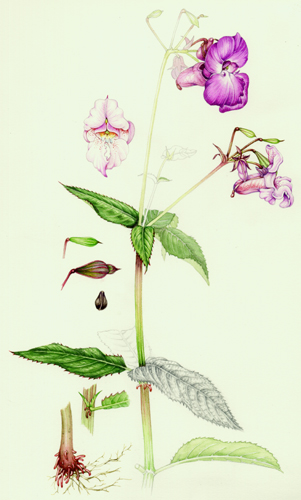
As a fairly new artist I struggle immensely with photographs of flowers. I’m over here with the magnifying glass, photoshop apps and still not getting to see what I need and what’s going on with the stamens. It’s not enough for me to just draw from the photo and paint/color it. That’s incredibly simple & okay for decoration, but I want MORE!! Maybe it’s my 20+ year background in microbiology and KNOWING there’s so much more involved in plants, flowers, leaves, insects etc., that can’t be seen with a naked, nor can a photo properly show me the bits and pieces hidden in the flower or shadowed by the surroundings. The work I’m most proud of has come from me either holding what I’m drawing or drawing it where it is.
Mark my words, one day I will also be a botanical illustrator. I have the science background but will be taking some Botany & art courses this fall (hopefully ON CAMPUS). I told you on YouTube, but my life was tragically altered with the loss of my only child. I find peace in art and nature that I’ve not found anywhere else. I’ve spent most of my life studying pathogens, but it’s time for a change. I’m in my early 40’s and I know it’s an odd time to change directions, but I don’t feel like I’m straying far from my love of science, I’m just changing the focus. I have a LOT of work cut out for me, but that drive is what keeps me motivated and literally breathing from one minute to the next.
Thank you so much for sharing your knowledge and gorgeous illustrations. I can’t get enough of them!!
Dear Katherine
I just read your comments on Youtube and am still feeling shaken by the enormity of your loss. And I entirely see and understand why losing yourself in the infinitely complex structures and minutae of flowers is a good place to station yourself. Ye. You are entirely right. Working from photos is incredibly irritating. its so so much easier to slide a stamen under the dissecting mictroscope, or to dissect out a sepal to figure out where the hell it attaches to the stem. Some flowers are almost impossible to illustrate from images. Aquillegia being a case in point, Oh my, all those convoluted elements of the corolla! And when you go in with your hand lens, staring at one grass spikelet; looking out for whether or not the awns twist and how the stamens emerge, and the “oh my gosh but the anthers are VIOLET!” moments… You can’t beat those. I bet you’re going to love and excel in your botanical illustration courses. And like I said on Youtube, you are FAR from being too old to start. The thing with botanical illustrators is they never retire, so you may have scores of years of dabbling with flowers, learning structures, and meticulously recording them visually ahead of you. There’s also a glut of work out there, scientists and advertisers/ packaging companies are crying out for accurate illustrations done by hand. I think its a response to the computerization and automation of the world around us, and a craving for something else, something which viscerally links humankind with the ecosystems and planet the we’re a part of. Man, you’re going to love this. And I’m so pleased to be able to be a tiny part of your journey, and your change of direction. I hope it brings you endless joy, and a little peace, too. Enjoy it, Katherine. XXX